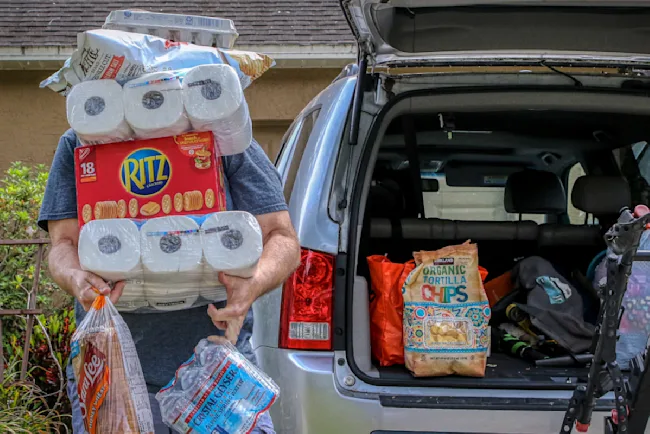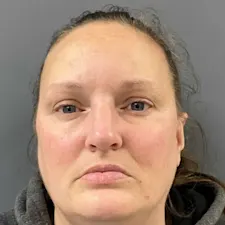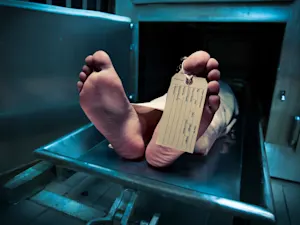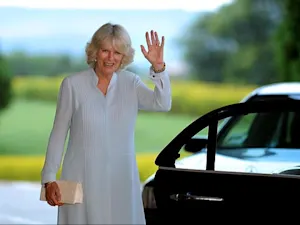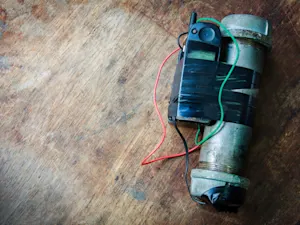
How Police Tracked Down the Stockton Serial Killer
In the predawn hours of April 10, 2021, a single gunshot shattered the stillness of East Oakland, California, claiming the life of 39-year-old Miguel Vasquez. It was the first in a string of seemingly random and deadly attacks that would span 18 months and leave two cities — Oakland and Stockton, California — gripped by fear.
18 Months of Terror
From April 2021 to September 2022, a shadowy figure roamed the streets, preying on individuals alone in the dead of night. The Stockton serial killer struck without warning, leaving shattered lives and no clues behind.
The Stockton serial killer's victims spanned a diverse group — different ages, backgrounds and even cities. Yet they all shared one thing: Each was alone when attacked:
- Miguel Vasquez: 39, killed April 10, 2021, in East Oakland
- Mervin Harmon: 39, killed April 16, 2021, in Alameda County
- Natasha LaTour: 46, attacked April 16, 2021, in Stockton; she survived multiple gunshots
- Paul Yaw: 35, killed July 8, 2022, in Stockton
- Salvador Debudey Jr.: 43, killed Aug. 11, 2022, in Stockton
- Jonathan Hernandez Rodriguez: 21, killed Aug. 30, 2022, in Stockton
- Juan Cruz: 52, killed Sept. 21, 2022, in Stockton
- Lawrence Lopez Sr.: 54, killed Sept. 27, 2022, in Stockton
These killings spanned nearly 18 months and struck fear across Stockton and Oakland, two cities separated by 70 miles. Each victim was killed without warning, often in dimly lit or secluded places.
What Connected These Killings?
This case had all the hallmarks of a methodical predator. The killings shared unsettling similarities:
- Isolation: The victims were alone, often walking or resting in dark, isolated areas.
- Timing: Most attacks occurred during late-night or early-morning hours.
- Motive: No personal belongings were taken, ruling out robbery as a motive. Police suspected the killer sought something darker than financial gain.
The profile painted a chilling picture — a shooter targeting the vulnerable with deadly precision. Police eventually linked the crimes through ballistics, tracing them back to the same semi-automatic handgun. The killer had a distinctive, upright posture captured in surveillance footage, a clue that would later aid in identifying the suspect.
How Did Police Catch the Suspect?
The turning point in the case came from a flood of public tips. When police released surveillance footage of a person of interest with an unusual "extremely upright" posture, community members stepped up, offering leads that eventually led to Wesley Brownlee.
Investigators then began monitoring Brownlee's movements, uncovering disturbing patterns:
- He drove around parks and dark places, his vehicle weaving through Stockton's dimly lit streets.
- Officers watched him "stop, look around, and move again" — a tactic that seemed to mirror the pattern of previous attacks.
On Oct. 15, 2022, at 2 a.m., police moved in. Brownlee was in his car, wearing dark clothing with a mask around his neck, armed with a Glock-style handgun, allegedly on the hunt for another victim.
Who Is Wesley Brownlee, the Alleged Killer?
Brownlee's life held a troubled past that hinted at a path to violence. Raised in Oakland, he had a history of run-ins with the law. At 15, Brownlee faced his first arrest for selling crack cocaine. He later served prison time for multiple drug convictions.
By the time he moved to Stockton in 2022, Brownlee carried a criminal record — and perhaps an urge that could not be controlled. Police later described him as "on a mission to kill," a chilling characterization that would haunt his trial.
Why Did He Do It?
To this day, no clear motive has surfaced. The killer's attacks appeared random, with victims from all walks of life. Police speculated that Brownlee's actions might stem from psychological factors, given the absence of financial or personal motives. Authorities found no connection between Brownlee and his victims, leading them to believe the violence sprang from a dark, personal compulsion.
How Did the Stockton Community React?
Fear lingered in Stockton and Oakland as the killings continued. Residents lived in constant worry, avoiding dark streets and isolated areas. The arrest provided relief, but these communities would not soon forget the shadow cast by the Stockton serial killer.
What's Next in the Case?
Brownlee's arrest marked a significant step, but the road to justice remains long. After charging him with three counts of murder, prosecutors added four more, bringing the total to seven murder charges, plus one count of attempted murder for the attack on Natasha LaTour. His case could take years to unfold in court, where families of the victims await justice.
A Killer Caught, But the Shadows Linger
The Stockton serial killings left a lasting impact on Stockton and Oakland, cities now bound by the memory of these tragic deaths. Wesley Brownlee's arrest offers a measure of closure, but the pain and questions linger. The Stockton serial killer's case is a stark reminder of the terror one individual can inflict — and the resilience of a community determined to stop him. The collective effort of residents and law enforcement proved invaluable in ending a nightmare, sending a message that these communities stand together, unwilling to let fear prevail.
References: Stockton serial killings timeline: 43-year-old suspect charged with 7 counts of murder | Accused Stockton Serial Killer Charged with 4 More Murders, Bringing Total to 7 | 4 more slayings are tied to the suspect in the Stockton serial killings | Details emerge about alleged serial killer's criminal past | Stockton Serial Killer: What's in suspect Wesley Brownlee's criminal past?


